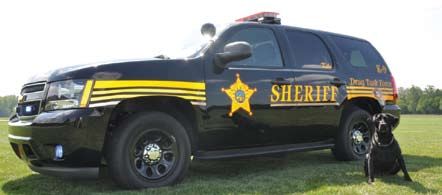Drug Diversion and Abuse: Prescription Canine
The increase in major trafficking in prescription drugs nationwide has spawned a new way to capture illicit drug dealers and curb illegal traffic in pharmaceuticals.
John Burke, commander of the Warren County, Ohio, drug task force and retired commander of the Cincinnati Police Pharmaceutical Diversion Squad, is a 40-year veteran of law enforcement. Cmdr Burke also is the current president of the National Association of Drug Diversion Investigators. For information, he can be reached by e-mail at burke@choice. net, via the Web site www.rxdiversion. com, or by phone at 513-336-0070.
Law enforcement has used canines for many decades as patrol partners for humans. These dogs have been trained to attack on command, search buildings, track for suspects or lost children, and more recently, they have been trained to sniff out illegal substances. Dogs are used by law enforcement every day to detect drugs, bombs, agricultural products, and cadavers.

Law enforcement has not pursued canine training for detecting prescription drugs, however. There is good reason for this–pharmaceuticals are legal drugs, and using a dog for probable cause to search a vehicle or other location would be illegal. Therefore, the training and use of prescription sniffing canines in law enforcement was not pursued.

That all changed on December 2, 2009, when a dog named “Kash” (right) received his certification on illicit drugs, US currency, and prescription drugs! I personally have good reason to be proud of Kash since he was trained by Deputy Brian Lewis of the Warren County Sheriff’s Office, who is the highway interdiction officer for the Warren County Drug Task Force, of which I have the privilege of commanding. Warren County, Ohio, Sheriff Larry Sims deserves considerable credit for allowing this idea to come to fruition, with the National Association of Drug Diversion Investigators providing the funding through a grant.
One of the things we found is that over half of the searches by our canines did not involve having probable cause to search, but involved search warrants or consents. In addition, Deputy Lewis already had narcotics dog “Kilo,” (below) who could provide probable cause on traffic stops and other nonconsent or warrantless searches. So why not put both of these highly trained canines in the same police vehicle? In fact, that’s exactly what we started doing on December 3, 2009.

Our drug task force, and most law enforcement agencies nationwide, have seen a considerable increase in major trafficking in prescription drugs. The influx of these drugs from Florida and the Detroit, Michigan, area continue to leave its deadly mark in Ohio and bordering states. Transporting thousands of dollars in street value of pharmaceuticals in motor vehicles has become more commonplace on our highways and interstates. It is no secret to many of these illegal entrepreneurs that police canines are not trained on pharmaceuticals, and even if stopped by law enforcement, it is likely that they will be able to continue without detection.
Kash is also trained to detect US currency, something that goes hand in hand with drug trafficking, and many times is not located during police searches of vehicles and buildings. Seizing drugs is the main mission, but securing a drug dealer’s proceeds is a close second, as it hits to the heart of what trafficking is all about.
Kash is trained on hydrocodone, oxycodone, alprazolam, methadone, lorazepam, hydromorphone, and morphine. Other prescription drugs can be added in the future. He was not only trained on actual pills, but also on the pure substances compounded in capsules by pharmacist Jeff Hill, of Hill’s Compounding Pharmacy in Milford, Ohio, to whom we owe our gratitude. â–

